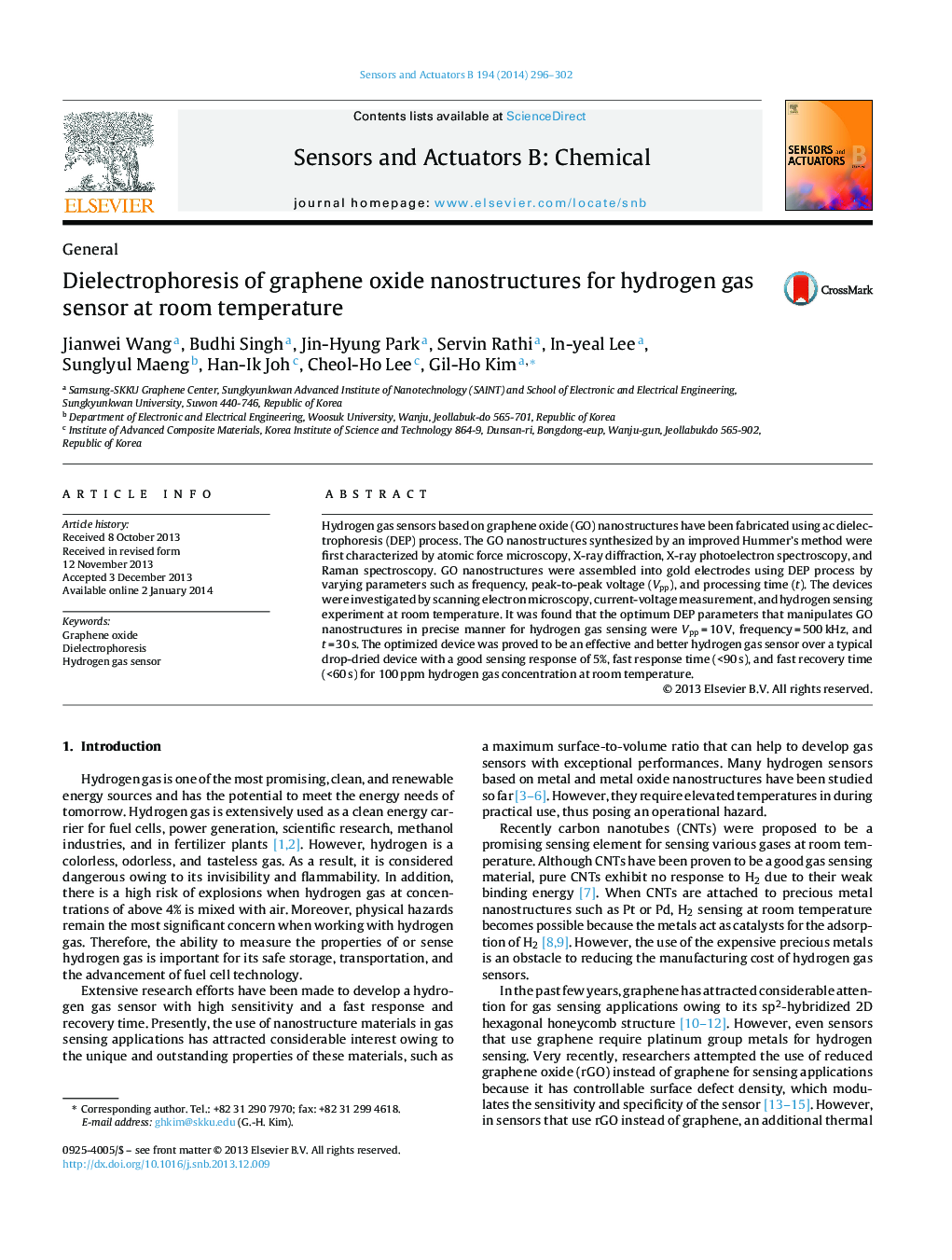| Article ID | Journal | Published Year | Pages | File Type |
|---|---|---|---|---|
| 742883 | Sensors and Actuators B: Chemical | 2014 | 7 Pages |
Hydrogen gas sensors based on graphene oxide (GO) nanostructures have been fabricated using ac dielectrophoresis (DEP) process. The GO nanostructures synthesized by an improved Hummer's method were first characterized by atomic force microscopy, X-ray diffraction, X-ray photoelectron spectroscopy, and Raman spectroscopy. GO nanostructures were assembled into gold electrodes using DEP process by varying parameters such as frequency, peak-to-peak voltage (Vpp), and processing time (t). The devices were investigated by scanning electron microscopy, current-voltage measurement, and hydrogen sensing experiment at room temperature. It was found that the optimum DEP parameters that manipulates GO nanostructures in precise manner for hydrogen gas sensing were Vpp = 10 V, frequency = 500 kHz, and t = 30 s. The optimized device was proved to be an effective and better hydrogen gas sensor over a typical drop-dried device with a good sensing response of 5%, fast response time (<90 s), and fast recovery time (<60 s) for 100 ppm hydrogen gas concentration at room temperature.
